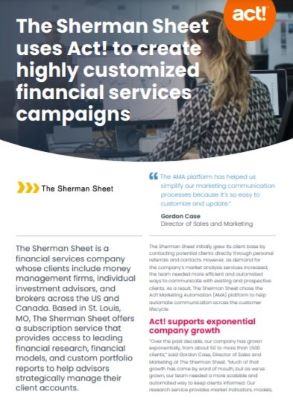Creating and running a marketing campaign can feel like an overwhelming task, especially for small business owners who already have a lot on their plate. As we discussed in our Part 2 blog “Six free ways to drive traffic to your website”, driving traffic to your website involves a mix of marketing activities you may already be doing, such as leveraging social media, engaging your community, reviewing analytics, and more. If you’re doing any or all of these things, congratulations! You’re already laying the foundation of a successful marketing strategy.
Here are some key ways to further refine and simplify your approach to marketing campaigns:
Have specific goals in mind
All too often, small business owners aren’t sure where to start. It’s easy to feel overwhelmed by a vast list of marketing activities. But a marketing campaign is much more specific than just generally promoting your business or increasing sales. A campaign is intended to generate a certain result or meet a particular goal. For example, a business might want to generate brand awareness or promote the opening of a new location by offering in-store, limited-time discounts. The specific goal is to drive traffic to the new store and generate X number of dollars from that location within a certain time frame.
Identify your campaign “ingredients”

After defining your marketing goal, you have to figure out how to accomplish it. Which media channels and content will you use? For instance, you may rely exclusively on social media, or create a tiered email marketing campaign to send to targeted recipients from your email database. Who will help you create and distribute your content? Will you use social media, search engines, or display ads? Also, will you need help creating copy, videos, photography, infographics, landing pages, or other shareable content? Will you rely exclusively on digital marketing, or do you have the budget for direct mail and flyers (and more importantly, would those make sense for your audience)? By identifying these channels upfront, you can create the right content and message for the right medium instead of trying to recreate the wheel for each asset.
Know your audience
This can’t be overstated. Many marketers can get stuck in the habit of wanting to target everyone, but if your marketing campaign is too vague and ill-defined, chances are it won’t reach anyone. The good news is, you don’t have to spend many hours and lots of money to understand your target audience. It can be as simple as segmenting your audience by prospects, new customers, long-term customers, and inactive customers, and coming up with key messaging that’s relevant to them.
For example, The Sherman Sheet, a financial services company and long-time Act! customer, specifically uses the Marketing Automation (AMA) platform to create highly customized email campaigns. They optimize the campaigns to reach current paid clients, prospective clients who signed up for a 30-day free trial, and those who completed a 30-day trial as follows:
- Campaigns to current paid clients remind them of the various tools, reports, and video tutorials they can access as part of their subscription, as well as reminders to join weekly live webinars.
- Clients in the middle of a 30-day free trial receive a sequence of tiered emails that explain the various tools and reports they’ll receive as a paid subscriber.
- As prospects approach the end of the trial, the campaign focuses heavily on converting them to a paid subscription. If a prospective client doesn’t convert by the end of the 30-day trial, another campaign automatically sends a follow-up email a few days later.
These are great examples of how small companies can use marketing automation to create highly customized campaigns that are personalized to the needs of a particular audience.
Look for marketing automation tools to help you work smarter, not harder
This task alone can be daunting for small business owners who may not feel that they have the time or technical know-how to research all of the available solutions on the market. What can you afford? Which features do you really need? How can you avoid paying for capabilities you don’t need right now, but may want to leverage in a year or two as your business grows? To help you simplify this process, be sure to check out this blog, which can help you narrow down the criteria for a marketing automation solution that best meets the needs of your business and your budget.
Determine measurable KPIs to evaluate your campaign’s success, and apply those learnings to future marketing efforts
Let’s say your initial campaign goal was to gain 1,000 more followers on your Facebook, Twitter, and Instagram accounts within three months, but your final result fell short of that. This doesn’t necessarily mean that your campaign failed. You may also notice that your current customers shared your content with their followers, or provided great referrals for your business. You can then use this data to gain more insight into your target market, where they post and how often, and perhaps how they use your products or services. So even though your campaign didn’t reach your stated goal, you still gained insight into your current and potential customers and their behavior and interests. That in itself may have been worth the time and creativity you put into your marketing plan.
Approach marketing as a continuous process of learning and refinement
Just as your business evolves, so do your customers’ tastes and preferences. This is why it’s critical to gain continuous feedback and metrics, whether it’s through direct purchases, online reviews, organic blog views, responses to paid ads, and community engagement. For each campaign, take some time to consider what worked well (or what didn’t) and why. Did you gain any unexpected insights into your audience? Which channels and types of content have worked best?
The most important thing to remember about successful marketing campaigns is this: don’t overcomplicate things. You don’t have to compete against global companies with multi-million dollar ad campaigns. With an organized approach and the right tools, you can efficiently build and customize your marketing campaigns to reach the right audience at the right time with the right content — and still have plenty of time to focus on running your business.






